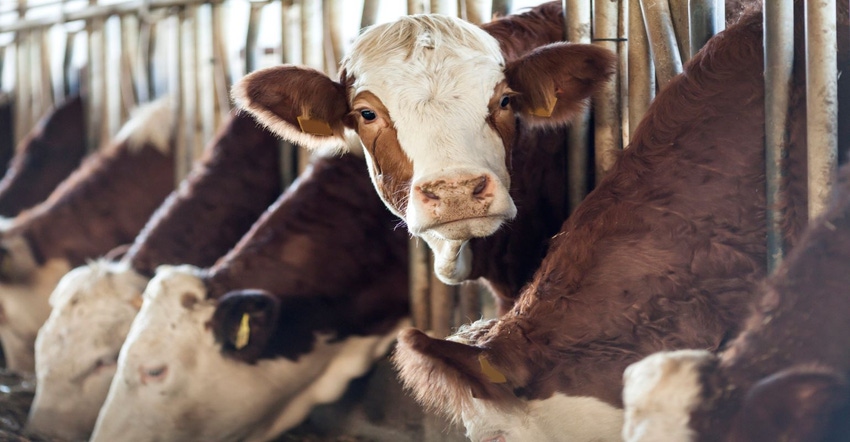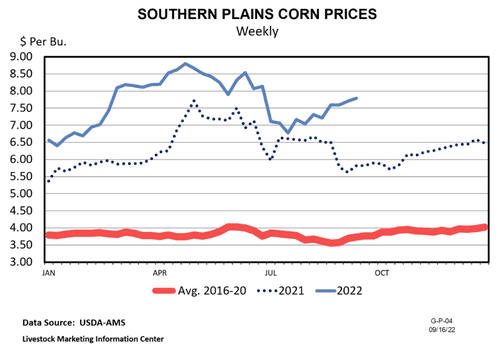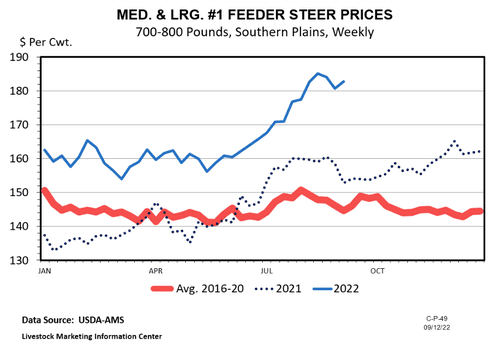What are the implications on the fall feeder cattle market with harvest around the corner?
September 21, 2022

As we move into fall, we have a pretty good feel for the size of the 2022 corn crop. Acreage is down significantly from last year and yield projections were reduced by almost 3 bushels this month to 172.5 per acre. After spending some time below $6 per bushel this summer, CME© December corn futures are in the upper $6 per bushel range. Barring a major shock on the demand side, feed prices are going to be a challenge for cattle operations this winter. So, I wanted to briefly talk through some implications of high feed prices on feeder cattle marketing and management.

Perhaps the most important thing to remember is that cost of gain and value of gain are correlated. Feedlots prefer to place heavier feeder cattle when feed prices are high, so the price discount on higher weights gets smaller. This narrowing of price slides increases the value of additional pounds when feeder cattle are sold. I hear a lot more discussion of feed prices than value of gain when producers discuss cattle feeding programs. In truth, opportunities can still exist in high feed price markets depending on cattle price dynamics. So, producers need to push the pencil on post-weaning feeding programs to determine if opportunities exist this fall and winter. Generally speaking, there is more feed flexibility for growing programs than finishing programs. Producers may find that opportunities to grow feeders still exist, especially if they can efficiently make use of alternative feeds.
Along those same lines, producers need to make sure they distinguish between cost of feed and cost of gain. Cost per ton of feed really does not tell me much unless I know something about that feed’s (or ration’s) ability to put weight on cattle. There are lots of ways to lower feed cost per ton, but I must make certain that I am not losing more value of gain than I am saving in cost per ton. This is why I tend to lean towards cost of gain when comparing programs and prefer to run multiple programs through a full backgrounding budget to compare expected profit.
Finally, there are also implications for fall grazing. A quick glance at the drought monitor reveals how much variation exists across the county. But, if you are in an area that has had good moisture conditions and is getting solid pasture growth, make certain to utilize that to the extent possible. While grazing costs have increased recently as well, they have certainly not increased as much as purchased feed. So, fall pasture is likely the most attractive feed that can utilize to add pounds. The current market also increases incentives to incorporate rotational grazing or strip grazing to increase the utilization of those forages.

Source: University of Kentucky, who is solely responsible for the information provided and is wholly owned by the source. Informa Business Media and all its subsidiaries are not responsible for any of the content contained in this information asset.
You May Also Like



